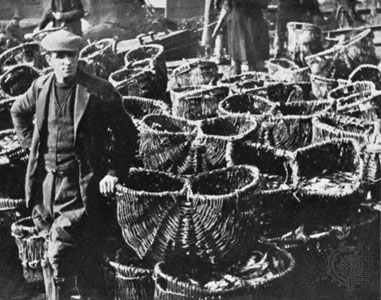On the website of The Grierson Trust, there is a great section about John Grierson, the “father of documentary.”
In one of the articles you can see Grierson’s notes on using a camera. He gave these to Edgar Ansty in 1932, just before he set off for a year shooting aboard HMS Challenger, a Royal Navy survey ship charting the Labrador Coast in north-east Canada.
Even after 80 or so years, the basic points Grierson makes still apply to shooting documentaries today.
Anstey had been given less than 24 hours training behind a movie camera. Grierson drove to Portsmouth by car to see Anstey off. Anstey recalls him manhandling two crates of film stock on board the Challenger, and then handing him a hastily written set of instructions on how to use the camera: “Take this with you,” he said, “this is how we shot Drifters.”
My favourite of the list: “Pans on scenery are bunk”. Still very true.
A close second is: “It has to be a damned important moving object to be worth a pan.”
With digital cameras, it’s easy to shoot in a very unplanned way, but you really shouldn’t. The costs in time and money will rapidly stack up in the edit. Much better to plan out what you will film way before pressing the red button. “Get people accustomed to the notion that you have to get everything as you want it before you can shoot film,” notes Grierson.
Other timeless advice is to shoot with the sun over your shoulder so it can give good exposure on your subject’s face, and remembering to focus.
Unfortunately, the film from Edgar Anstey’s voyage to Labrador, Uncharted Waters (1933) for the Empire Marketing Board, is currently ‘missing believed lost’.
CAMERA POINTS AT RANDOM
John Grierson
- Keep steady. Never from hand or hip.
- To get true movement of a ship you have to keep the horizon horizontal, therefore lashing to the ship will not get the effect (where horizon is dominant). My own method is to lash to the ship and miss the horizon by shooting down or shoot low and get the sky background. i.e., miss the swinging horizon. Alternatively, and if important enough, say in a big gale, you must practice getting the camera related to the horizon. Screw the camera on a stick and be your own compensating balance. The spirit level should help you. Naturally not too much of this, steadiness takes priority.
- Do not do any panning at all except on a moving object. It has to be a damned important moving object to be worth a pan. i.e. one the audience are really interested to follow. Then keep the pan as steady as possible even if it means letting the object beat the pan.
- Pans on scenery are bunk.
- Get into the habit of remembering to focus. It is not so easy to remember in the urgency of action.
- The gate should be frequently cleaned. I shot a whole day once with a hair waggling half across the frame.
- Do not be afraid to ask people to do things again rather than go on shooting raggedly on something that has flopped. This nerve will bore people but is half the job.
- ‘By guess and by God’ is the dirtiest thing you can say about a producer.
- Do not be afraid of setting up effects where it is difficult to get them on the run.
- Get people accustomed to the notion that you have to get everything as you want it before you can shoot film at 41/2d. a foot.
- Shoot with the light behind you, over your right or left shoulder preferably, according to the better illumination on faces. Flaherty shoots with a late afternoon light (he calls it ‘down the sink’) so long as it is strong for exposure, its lowness on the horizon allows a better light on faces. It is also more pleasantly soft on faces.
- Do not shoot without direct sunlight unless the skies are falling. If you must, remember the Black Country* principles of getting your greys to keyed to extremes of black and white. Snow is white – a solid silhouette in the foreground is black.
- Exposure at sea is greater than on land because the sea catches and throws up a vast amount of light. Remember this and make your exposure tests accordingly.
*The reference to ‘the Black Country’ is most likely connected with the filming for Industrial Britain by Robert Flaherty in the regions around Birmingham.


Great article – in many ways not much has changed, but I think Grierson would love the Vimeo community and seeing the enthusiastic way that documentary is evolving today. I wonder if he left any notes on editing? I always think his films are superbly edited. He really lets the pictures tell the story.
LikeLike